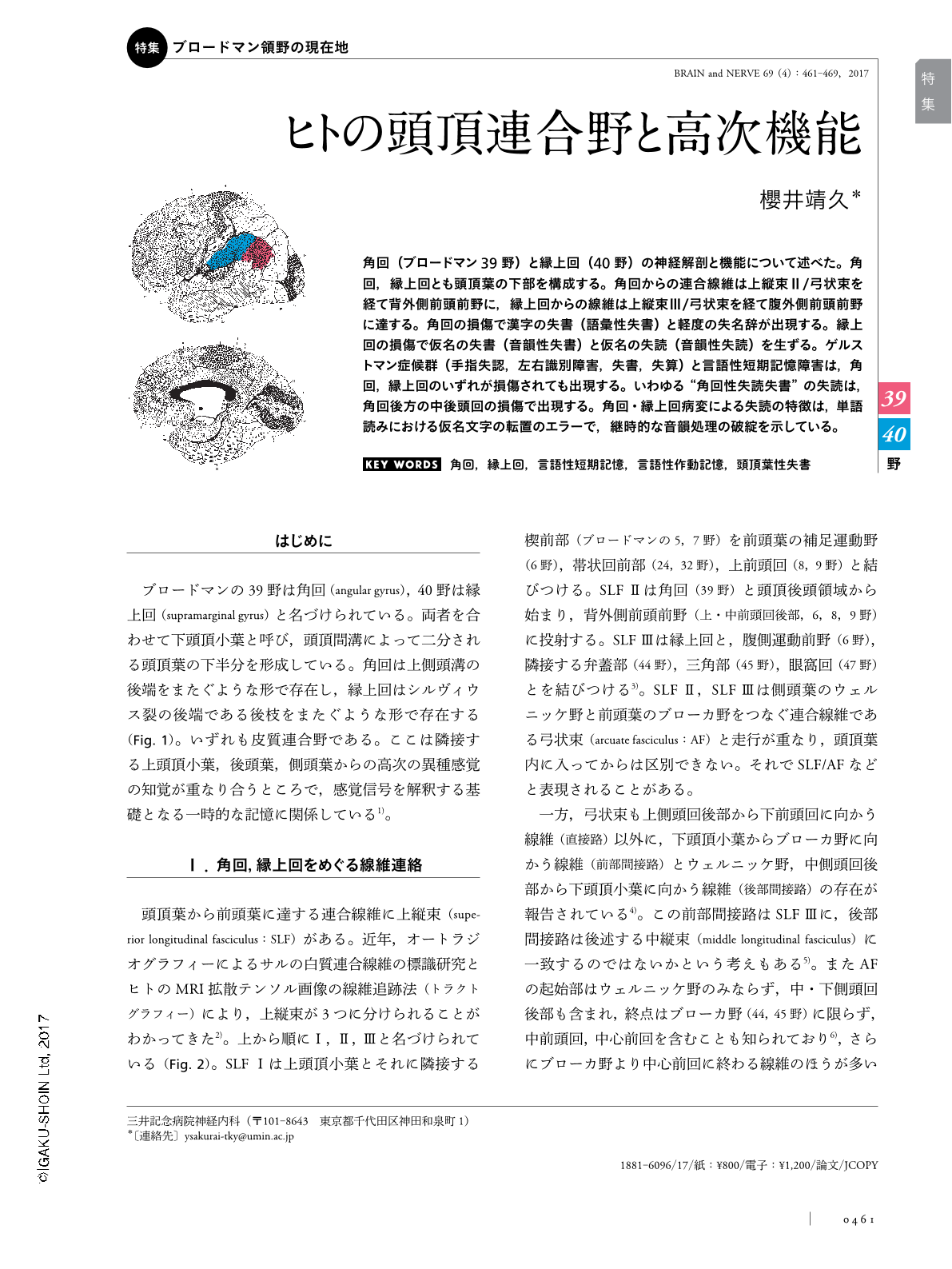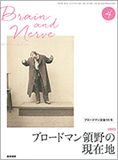Japanese
English
- 有料閲覧
- Abstract 文献概要
- 1ページ目 Look Inside
- 参考文献 Reference
角回(ブロードマン39野)と縁上回(40野)の神経解剖と機能について述べた。角回,縁上回とも頭頂葉の下部を構成する。角回からの連合線維は上縦束Ⅱ/弓状束を経て背外側前頭前野に,縁上回からの線維は上縦束Ⅲ/弓状束を経て腹外側前頭前野に達する。角回の損傷で漢字の失書(語彙性失書)と軽度の失名辞が出現する。縁上回の損傷で仮名の失書(音韻性失書)と仮名の失読(音韻性失読)を生ずる。ゲルストマン症候群(手指失認,左右識別障害,失書,失算)と言語性短期記憶障害は,角回,縁上回のいずれが損傷されても出現する。いわゆる“角回性失読失書”の失読は,角回後方の中後頭回の損傷で出現する。角回・縁上回病変による失読の特徴は,単語読みにおける仮名文字の転置のエラーで,継時的な音韻処理の破綻を示している。
Abstract
The anatomy and function of the angular gyrus (Brodmann Area 39) and supramarginal gyrus (Brodmann Area 40) are described here. Both gyri constitute the inferior part of the parietal lobe. Association fibers from the angular gyrus project to the dorsolateral prefrontal cortex via the superior longitudinal fasciculus (SLF) II/arcuate fasciculus (AF), whereas those from the supramarginal gyrus project to the ventrolateral prefrontal cortex via SLF III/AF. Damage to the left angular gyrus causes kanji agraphia (lexical agraphia) and mild anomia, whereas damage to the left supramarginal gyrus causes kana alexia (phonological dyslexia) and kana agraphia (phonological agraphia). Damage to either gyrus causes Gerstmann's syndrome (finger agnosia, left-right disorientation, agraphia and acalculia) and verbal short-term memory impairment. “Angular alexia with agraphia” results from damage to the middle occipital gyrus posterior to the angular gyrus. Alexia and agraphia, with lesions in the angular or supramarginal gyrus, are characterized by kana transposition errors in reading words, which suggests the impairment of sequential phonological processing.

Copyright © 2017, Igaku-Shoin Ltd. All rights reserved.


